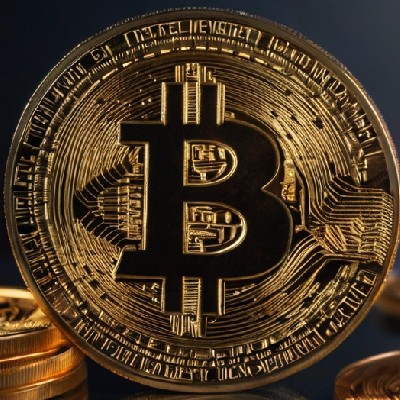
GAS/TWD 匯率換算器
今日Gas即時價格TWD
您認為今天 Gas 價格會上漲還是下跌?
Gas (GAS) 簡介
加密货币燃气:简洁而丰富的信息
加密货币行业一直在不断创新和发展。在这个快速变化的领域中,燃气(Gas)是一个广为人知且重要的概念。燃气是与特定加密货币相关的数字资源,用于支付网络上的交易费用。
燃气的概念最早由以太坊引入,它与以太币(Ether)息息相关。燃气是以太坊网络中的计量单位,用于衡量和计算在网络上执行的操作的成本。它确保了在以太坊区块链上进行的每一笔交易和智能合约的顺利执行。
燃气的需求和价格是根据以太坊网络上的交易拥堵程度和计算资源的消耗来决定的。当网络拥塞时,燃气价格可能会上涨,因为用户愿意支付更高的费用以确保他们的交易能够快速处理。反之,当网络较空闲时,燃气价格会下降。
用户需要用燃气来支付他们在以太坊网络上进行的每一笔交易的费用。这包括转账、智能合约的执行和其他与以太坊相关的操作。燃气的支付量与所执行的操作的复杂性和计算需求相关。
可以通过调整燃气价格和支付的燃气数量来影响交易被打包和确认的速度。较高的燃气价格和数量将促使矿工优先处理和确认交易,而较低的燃气费用和数量将导致交易可能需要较长时间来完成。
了解燃气的概念和作用对于加密货币用户至关重要。它提供了一种方式来确保以太坊网络上的交易的有效性和安全性。而在其他加密货币中,可以类比燃气的概念,使用相关的数字资源来支付交易费用。
总之,燃气在加密货币行业中具有重要的地位和作用。它是确保交易有效性和顺利执行的关键要素。理解和掌握燃气的概念将使用户能够更好地使用和交互加密货币网络。
Gas 的 AI 分析報告
Gas價格歷史(TWD)
 最低價
最低價 最高價
最高價 
Gas的最高價格是多少?
Gas的最低價格是多少?
Gas價格預測
什麼時候是購買 GAS 的好時機? 我現在應該買入還是賣出 GAS?
GAS 在 2026 的價格是多少?
GAS 在 2031 的價格是多少?
熱門活動
常見問題
什麼因素影響Gas加密貨幣的價格?
我該如何購買Gas加密貨幣?
氣體的價格在不久的將來預計會上漲嗎?
氣體的歷史價格趨勢是什麼?
我在哪裡可以實時追蹤天然氣價格?
Gas與NEO之間的價格相關性如何影響其估值?
氣體價格能再次達到之前的歷史最高點嗎?
在投資Gas之前,我應該考慮哪些風險?
氣體供應如何影響其市場價格?
是否有即將發生的事件可能會影響氣體價格?
Gas 的目前價格是多少?
Gas 的 24 小時交易量是多少?
Gas 的歷史最高價是多少?
我可以在 Bitget 上購買 Gas 嗎?
我可以透過投資 Gas 獲得穩定的收入嗎?
我在哪裡能以最低的費用購買 Gas?
Gas 資訊
Gas 動態
什麼是 Particle Network(PARTI)?
新用戶指南(2025):如何使用您的 Web3 加密錢包進行充值?
Bitget Seed:潛力資產一站式交易平台
DuckChain(DUCK):首個 TON Layer 2
Bitget 熱點(11 月 27 日 - 12 月 3 日)
Bitget 熱點(11 月 13 日 - 11 月 19 日)
Bitget 熱點(11 月 20 日 - 11 月 26 日)
如何使用Bitget Swap購買鏈上資產
Bitget Swap的常見問題與回答
Bitget MegaSwap的使用說明
Gas行情
Gas持幣分布集中度
Gas地址持有時長分布

全球Gas價格
- 1
- 2
- 3
- 4
- 5
相關加密貨幣價格
Bitget 平台新上架幣種的價格
如何購買Gas(GAS)

建立您的免費 Bitget 帳戶

認證您的帳戶

將 GAS 兌換為 TWD
購買其他幣種
您可以在哪裡購買Gas(GAS)?
影片部分 - 快速認證、快速交易

GAS/TWD 匯率換算器
Gas評級
Bitget 觀點





關於Gas的更多資訊
交易
理財










Gas社群媒體數據
過去 24 小時,Gas社群媒體情緒分數是 3,社群媒體上對Gas價格走勢偏向 看漲。Gas社群媒體得分是 0,在所有加密貨幣中排名第 753。
根據 LunarCrush 統計,過去 24 小時,社群媒體共提及加密貨幣 1,058,120 次,其中Gas被提及次數佔比 0.01%,在所有加密貨幣中排名第 366。
過去 24 小時,共有 656 個獨立用戶談論了Gas,總共提及Gas 67 次,然而,與前一天相比,獨立用戶數 增加 了 53%,總提及次數減少。
Twitter 上,過去 24 小時共有 1 篇推文提及Gas,其中 0% 看漲Gas,100% 篇推文看跌Gas,而 0% 則對Gas保持中立。
在 Reddit 上,最近 24 小時共有 2 篇貼文提到了Gas,相比之前 24 小時總提及次數 減少 了 0%。
社群媒體資訊概況
3